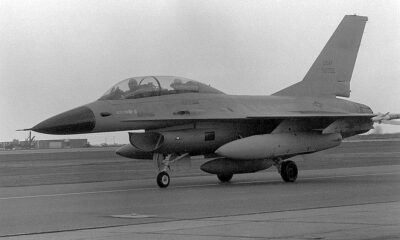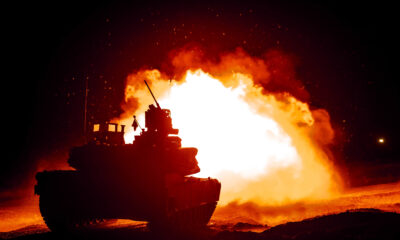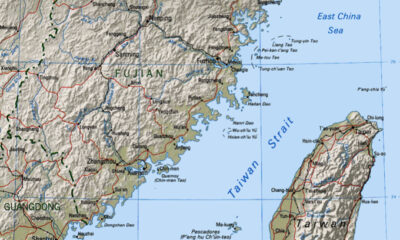Civilization
The Tank is Dead?
Rumors of the death of the tank are exaggerated. In fact, the tank will see different kinds of uses in ground warfare.

Lessons from the battlefields of Ukraine
Hundreds of expensive tanks of both sides are being destroyed on the battlegrounds of Ukraine by cheap UPV drones. These include the Russian T-90MS Tank (worth about $4.2million) and the German Leopard 2A6 Tank (about $6.3 million). They are being destroyed by ubiquitous Chinese UPV drones, and their local variants, that sell for about $3000. The U.S. has also supplied Ukraine with 155mm howitzer rounds known as Remote Anti-Armour Munitions (RAAM). Each shell scatters nine 2.3kg magnetically activated mines. Tanks with limited vision, especially Russian tanks, often hit these mines, damaging their tracks, and making them sitting targets. They are all then finished off by precision artillery and antitank guided missiles.
Several military experts have argued that tanks will always have a place because “lighter infantry organizations lack the combination of firepower and mobility to achieve early battlefield dominance and immediately exploit success.” They are likely correct. However, most of their previous examples they give are combined arms battles of the 20th Century. Equally, there is no doubt that against lightly armed foes like Hamas in Gaza, they can seize key objectives. However, Ukraine presents a different experience.
Primarily, the losses for both sides in Ukraine are extraordinary.
Moscow invaded Ukraine with an estimated fleet size of 3,417 main battle tanks, around three and a half times that of Ukraine. Russia lost roughly 60 percent, about 2,000 of these by mid-2023, The Moscow Times reported in July, citing the Kiel Institute’s Ukraine Support Tracker. They claim that Ukraine has lost the same number of tanks, but there is no source for that claim. GitHub – an American AI platform, estimates Russian tank losses have remained above 3:1 over Ukraine since the start of the war. Of course, that figure is relative, considering the Ukrainians had a smaller fleet to begin with.
What about replacements?
Considering new tank production, recovery of old tanks from long-term storage and the need to make good steep armor losses in 2022, the Kremlin can afford to write off 50 or so tanks a month without depleting its overall arsenal of around 3,000 front-line tanks. Around Avdiivka alone, the Russians are losing 60 tanks a month. And that number could grow as the 239th Tank Regiment rolls into battle—and runs into the same minefields and artillery and drone kill-zones that pulverized the tank units that came before it.
And they keep on coming.
The Russians plan to roll more tanks toward Avdiivka. “The concentration of the 239th Tank Regiment of the 90th Tank Division is ongoing southwest of Avdiivka,” the Center for Defense Strategies, a Ukrainian think-tank, reported. The 239th is the third Russian tank regiment on the Avdiivka front, after the 80th and 10th. On paper, the 239th has a hundred or more tanks in several battalions altogether manned by a few thousand people.
Which tanks are performing best on the battlefield?
The old 42-ton Ukrainian T-64 Tanks (worth about $1.12 million) are heavily armored and are performing well. The German Leopard 2A6 Tank (62 tons) and the British Challenger II Tank (64 tons) are both faster and superior to the Russian tanks. “They have better armor protection using advanced active protection systems, fire control, optics, and munitions,” Seth G. Jones, at the Center for Strategic and International Studies (CSIS) noted. Still tank on tank battles are very rare. The most powerful American tank in Ukraine’s armory, the M1 Abrams Tank has not seen action simply because at 73 tons it too heavy for the muddy Ukrainian roads. It is also too expensive to maintain. The U.S. has stopped all further production of new Abram models.
Ironically, one of the best American tanks on the battlefield, is not actually a tank. It is a Bradley Fighting Vehicle (worth about $2.4 million) The M3 Bradley (27.6 tons) equipped with BGM-71 TOW missiles is more than a match for many Russian tanks. Ther are several Telegram videos of Bradley’s destroying Russian armored columns. Originally developed as an infantry carrier, it has a V shaped base and is very protective of its crew. The Russians who partly destroyed and captured one, after the Ukrainian crew escaped, were amazed at the protective inner compartment.
Which raises the issue that few of us want to visualize.
We, of the Xbox generation of immersive video games like Call of Duty and the World of Tanks, see exciting explosions but never burnt and injured realistic victims. In real life tanks crews are burnt, injured, concussed, and suffer long-term brain damage. There is small consolation for Russian tank crews, as the ammunition is stored right next to the crew, and death is often instantaneous.
So, what is the future for the tank?
If there is infantry, there will be tanks. Big tank battles, however, will not be common.
In the short term:
Tanks that are lighter in order to ease the logistic, with V-shaped floors, crewless turret, with minor heat signature, APS systems against drones (like Trophy or light Droneguns), more equal armor thickness all around since now top hitting kamikaze drones and missiles are the main enemy, not other tanks anymore.
They would all be armed high-trajectory indirect-fire weapons like rockets, missiles, or mortars. Many tank models would also have additional secondary weapons like rotary multi-barrelled autocannons, machine guns, anti-infantry explosive strips on the sides, side-firing ports for internally carried soldiers or crew, etc. They would also have various types of advanced computer brains, communications, systems, and sensors.
Increasingly they sound like the relatively inexpensive M3 Bradley and the variants America are about to produce.
In the long term:
Tanks will be AI controlled and/or remotely controlled, crewless vehicles, with light armor and focus on mass production and low maintenance.
The Russian T-14 Armata is the first MBT designed with eventual automation in mind. The Russians are developing a robotic addition to the Armata platform, called the Tachanka-B, and even retrofitting existing manned units for automation. The crew compartment will be replaced with additional fuel and ammunition.
Possibly:
Single human pilots will be commanding entire units of robot tanks and planes from support stations or command vehicles near the front. The human operator/commander will give the detachments of robots mission directives and the robots will execute the directives autonomously. This will be more combat efficient and less prone to electronic jamming. The robots will communicate with all other robotic and manned assets on the field to coordinate their attack and improve efficiency, human input will gradually decrease in the race to improve the operational efficiency of these new robot armies.
Futuristic and fantastic? – Maybe – Long live the tank.
This article was originally published by RealClearDefense and made available via RealClearWire.
Patrick Drennan is a journalist based in New Zealand, with a degree in American history and economics.
-

 Education3 days ago
Education3 days ago‘Grading for Equity’: Promoting Students by Banning Grades of Zero and Leaving No Class Cut-Ups Behind
-

 Civilization5 days ago
Civilization5 days agoEarth Day Should Celebrate U.S. Progress & Innovation
-

 Family3 days ago
Family3 days agoIdaho defends against abortion mandate
-

 Civilization4 days ago
Civilization4 days agoNewsom plays silly abortion politics
-

 Constitution2 days ago
Constitution2 days agoPresidential immunity question goes to SCOTUS
-

 Education5 days ago
Education5 days agoThe Intifada Comes to America. Now What?
-

 Civilization5 days ago
Civilization5 days agoEarth Day – part of cultural Marxism
-

 Civilization4 days ago
Civilization4 days agoWaste of the Day: China Still Owes Over $1 Trillion to American Bondholders













